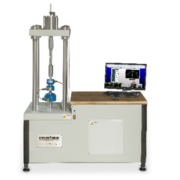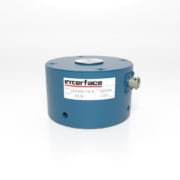Robotics and Automation are Changing Modern Manufacturing at Interface
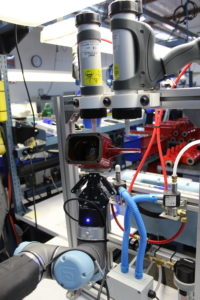 As the leader in manufacturing force measurement solutions for more than 51 years, the day of carrying out monotonous tasks on the manufacturing line by hand is a history not worth repeating.
As the leader in manufacturing force measurement solutions for more than 51 years, the day of carrying out monotonous tasks on the manufacturing line by hand is a history not worth repeating.
Innovation is a core value at Interface. It is essential in helping us advance and grow our production experience and responsiveness to our customer’s advanced application use of our load cells, torque transducers, and thousands of other products that we manufacture.
Continuous Improvement SME Lance Gerdes shares his insight into how a focus on innovation is leading to the introduction of automation tools and robotics onto the manufacturing floor at Interface’s 50,000 square foot headquarters in Arizona.
It is difficult to look back fondly on the days that lacked automation of production line tasks. Line work was straining and tedious during those days, as most technicians would agree. Fast-forward to today, companies who are incorporating new technology are typically experiencing process improvements, increased efficiency, reduced overhead, improved quality output and better run facilities overall.
Results speak for themselves. Manufacturing facilities equipped with automation can significantly reduce time spent on repetitive work, freeing up time for technicians to focus on other areas that advance production and get products to market.
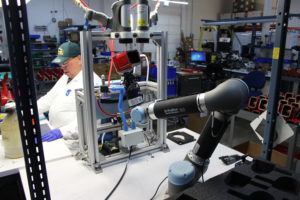 Interface recently invested in a line of collaborative robots to upgrade our facilities. With responsibility for the specialized 1923 Wireless Load Cell product line at Interface, looking back there are many of the typical tasks our technicians used to carry out that involved full days of certain repetitive tasks by hand. The days where my technicians were forced to focus on these tasks represented a significant barrier to peak productivity. Times have changed and so has Interface!
Interface recently invested in a line of collaborative robots to upgrade our facilities. With responsibility for the specialized 1923 Wireless Load Cell product line at Interface, looking back there are many of the typical tasks our technicians used to carry out that involved full days of certain repetitive tasks by hand. The days where my technicians were forced to focus on these tasks represented a significant barrier to peak productivity. Times have changed and so has Interface!
Today with the introduction of automation, we are operating more efficiently than in those dark ages without robotics. We are using collaborative robots to handle tasks, including the application of RTV, which is a silicone sealant used on load cells to protect them from environmental factors. In the past, the technician would be responsible for applying this adhesive in addition to hand-tooling. By automating the adhesive step of this task, those technicians are averaging 50% more efficiency in their workflow.
“Robotics used to facilitate automation is a “must-have” addition to every manufacturing floor.” Lance Gerdes
The return on investment is easily achievable in a year or less. Interface has seen as high as a 15% production increases across the board. As a champion of continuous improvements in our manufacturing, I am excited to see our production results. This success is now leading us to look into more tasks that can be automated using collaborative robotics.
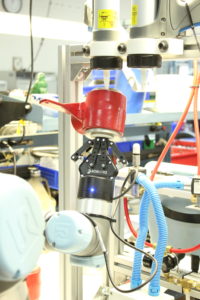 One concern regarding the rise of robotics in the industrial sector we constantly get questions about is the use of robotics as a replacement for our human workforce. This could not be further from the truth at Interface. If anything, robotics will eventually increase the skill set of our current technicians and open up new job openings for Interface as we grow. As we get more advanced collaborative robotics integrated into our work, it improves our capabilities. We will need operators for this automation equipment. And, as we become more efficient and increase profit margins, we’ll have the capacity to grow Interface’s products and services. A win for more jobs, more solutions, and more happy customers!
One concern regarding the rise of robotics in the industrial sector we constantly get questions about is the use of robotics as a replacement for our human workforce. This could not be further from the truth at Interface. If anything, robotics will eventually increase the skill set of our current technicians and open up new job openings for Interface as we grow. As we get more advanced collaborative robotics integrated into our work, it improves our capabilities. We will need operators for this automation equipment. And, as we become more efficient and increase profit margins, we’ll have the capacity to grow Interface’s products and services. A win for more jobs, more solutions, and more happy customers!
Robotics and automation are changing the way manufacturing floors operate for the better. At Interface, we look forward to researching and applying new ways that each department can implement automation and robotics technology.
Contributor: Lance Gerdes, Continuous Improvement SME, Interface
More than half of Interface’s team members work in production. The average tenure for our team is nearly a decade. Our diverse talent in skill and capabilities serve more than 4,500 global customers in various markets each year. For more detailed insights on the inner-working of the Interface manufacturing floor, Interface’s revolutionary products and profiles on our excellent team subscribe to the InterfaceIQ blog.




